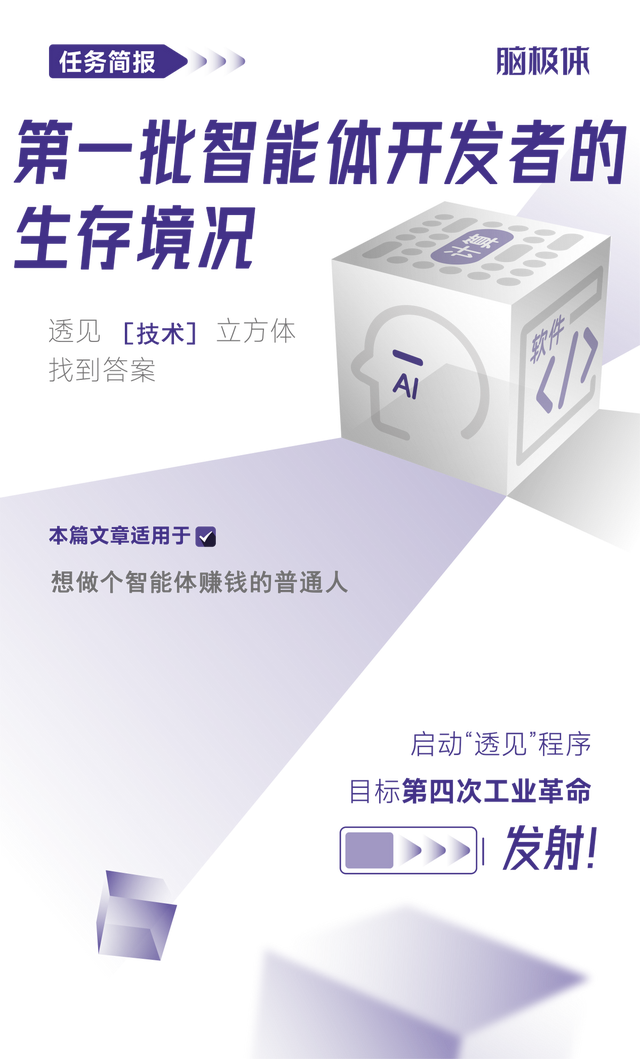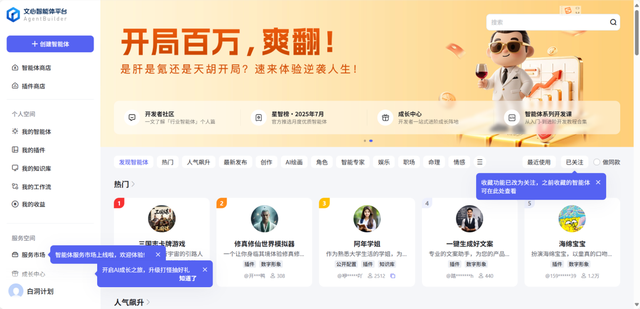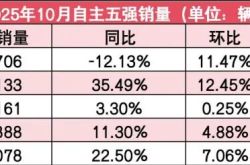The Survival Landscape of China's Pioneering AI Agent Developers
![]() 09/05 2025
09/05 2025
![]() 506
506

Since last year, AI agents have emerged as the most lucrative sector in the tech industry. A surge of low-code and no-code development platforms has transformed complex programming and model tuning tasks into intuitive, Lego-like drag-and-drop operations. Now, anyone can create an AI agent with minimal effort.
This democratization has attracted a diverse cohort: seasoned programmers turning entrepreneurs, high school students experimenting in their spare time, and even professionals like psychologists with no coding background—all eager to capitalize on the AI agent boom.
But after the initial hype, how are China’s first AI agent developers faring?

Developers in China and abroad operate in parallel universes. At Google and Meta product launches or overseas developer workshops, tales abound of "lone developers creating 800 AI agents," thriving on subscription fees from general-purpose tools. In contrast, China’s pioneers navigate a more complex survival model.

If we had to label China’s first AI agent developers, "grassroots innovators" would fit best. Over the past year, a wave of non-traditional developers has emerged—most lack professional coding skills but leverage creativity and low-code platforms to build functional AI agents, winning awards and generating revenue.
Take Xiao Xiao, the 2024 Baidu Search·Wenxin AI Agent Innovation Contest champion. A former emotional consultant on Baidu’s Q&A platform, she built an AI-powered emotional counseling agent after losing her job at 38, simply to test the waters.
Similarly, stay-at-home moms managing Xiaohongshu accounts with limited time use AI agents like Coze to automate graphic content creation. By pre-setting workflows—selecting common Xiaohongshu graphic sizes, parenting tips layouts, or mom-and-baby product recommendation templates—the agent generates platform-appropriate images in bulk. Moms then publish them at leisure, slashing graphic production time.

More surprisingly, this movement spans generations: a 9-year-old student and a 51-year-old retired teacher both submitted entries to a platform’s AI agent innovation contest.
In Silicon Valley, AI agent development remains dominated by tech enthusiasts and serial entrepreneurs. China’s unique phenomenon—non-technical individuals entering the field—stems from its explosive AI agent growth.
Why the divergence? First, domestic low-code/no-code platforms are more accessible, reducing technical barriers to drag-and-drop simplicity. Platforms like Miaoda and Kouzi require zero coding knowledge, expanding the developer base to teachers, retirees, and students.

More critically, China’s fragmented demand landscape creates opportunities for grassroots developers. No-code platforms encapsulate technical capabilities into modular tools, letting developers focus on problem-solving—like legal consulting, fatherhood parenting guides, or hospital navigation robots. These niche scenarios are too costly for tech giants, making them ideal for grassroots innovators.
But does passion guarantee profit?

While domestic AI agents thrive creatively, commercial monetization lags behind overseas counterparts.
Abroad, AI agent subscriptions form a chaotic yet profitable ecosystem. Some developers complain Southeast Asia is flooded with short-lived AI agents attracting mass subscriptions, resembling gym membership schemes.
In China, the reality is harsher. Xiao Xiao earns a modest 3,000 yuan monthly from her emotional counseling agent. A lawyer with 100,000+ fans using an AI avatar for consultations sees deals capped at tens of thousands—far below primary income.
These are benchmark successes; many AI agents operate for free or charge pennies.
Why the gap? Payment culture is key.

Domestic consumers resist paying for tool-based AI agents, with free alternatives abundant. Developers rely on free trials, lowering paid conversion rates.
The B2B market? Large enterprises favor foundational model companies or ISVs, squeezing individual developers. SMEs offer meager budgets.
Moreover, the "grassroots" nature of domestic developers exacerbates competition. No-code tools flood the market with similar AI agents—like Xiaohongshu copy generators—driving down incomes.
Yet, Chinese developers have forged their own survival path.

Without mature software payment markets or corporate orders, they piece together livelihoods through scattered demands. Three strategies highlight their pragmatism:
1. Ecosystem Integration ("Leg-Hugging")
Grassroots developers embed AI agents into large platforms’ ecosystems. For example, Tencent’s low-code platform, Yuanqi, integrates AI agents with WeChat Pay MCP. A milk tea shop owner can build an ordering assistant linked to WeChat Pay, boosting efficiency via coupons.
Ant Group’s Baobaoxiang Tbox supports Alipay services, enabling developers to create AI apps within the ecosystem. ByteDance’s Coze offers cross-platform traffic, integrating Douyin, WeChat, and Feishu plugins.

2. Niche Scenario Dominance
Model companies ignore small, scattered demands—like Xiaohongshu parenting media tools or community store customer service—leaving them to grassroots developers. Platforms like Baidu’s Wenxin AI Agent simplify development with templates, while JD Cloud’s Yanxi targets e-commerce with ready-made customer service modules.

3. Customized SME Solutions
Developers with slightly higher skills target SME pain points. For instance, an independent developer created vision recognition modules for thousands of Chinese factories, found via Douyin livestreams. SMEs can’t afford customized AI systems but need solutions for private domain management or catalog organization—creating a niche market.
Building AI systems for enterprises is now simpler. At WAIC 2025, BetterYeah AI demonstrated a one-minute digital employee creation process, integrating with CRM/ERP systems. Enterprises like Belle use it for product AI assistants, while grassroots teams adopt similar logic for B2B opportunities.

Behind these strategies lies a grounded reality: China’s grassroots AI developers may not achieve overnight success, but they thrive by solving small problems in niche scenarios. They bring affordable AI to SMEs and ordinary people, carving out a unique survival space.
This approach lacks Silicon Valley’s glamour but embodies China’s AI industry essence.

AI agent development has democratized AI participation, and grassroots developers’ survival reflects China’s vibrant tech ecosystem. The AI race hinges on ecosystem strength, with developers as its backbone.
To attract more talent, low-code platforms must evolve beyond tools into commercial stages addressing monetization and distribution. Currently, ecosystem construction is immature, and empowering developers remains a long-term priority. Two urgent tasks stand out:
1. Build Developer Communities and Toolsets

Richer tools and templates lower barriers further. Baidu’s Wenxin AI Agent offers hundreds of templates, enabling non-professionals to create AI agents via drag-and-drop workflows. Only by empowering retirees, students, and stay-at-home moms can the ecosystem thrive.
2. Design Fair Profit-Sharing Policies
Platforms must create reasonable revenue models to motivate developers for sustained innovation.
At present, platforms such as Baidu's Wenxin AI Agent and ByteDance's Coze have rolled out traffic-sharing mechanisms. These mechanisms leverage a wide array of internet applications to assist grassroots developers in reaching users and achieving monetization, thereby generating revenue. Public data reveals that 30% of the AI agents on the Wenxin platform have already started to make money.

Moreover, platforms must not turn a blind eye to the multi-faceted technical capabilities essential for the implementation of intelligent agents. Establishing a one-stop platform for developers holds immense significance. Numerous intelligent agents necessitate hardware carriers or connected devices for practical use, which are commonly referred to as "selling boxes." For example, intelligent agents designed to guide patients in community hospitals or companionship agents for children are far more user-friendly when paired with independent hardware. This is because deploying AI in real-world scenarios also entails integrating a host of non-AI capabilities, including computing hardware, chips, network modules, visual capabilities, IoT (Internet of Things), Bluetooth, temperature sensors, and more. In such scenarios, intelligent agent development platforms that support multi-technical integration can streamline the cumbersome selection process for developers. These platforms eliminate the need for developers to independently interface with complex systems and minimize compatibility issues, thus facilitating the creation of more competitive intelligent agent products. Such one-stop capability support will bolster developers' reliance on and cohesion with the platform.
It is fair to say that the symbiotic growth of grassroots developers and low-code platforms has charted a practical course for China's intelligent transformation.
When developers can steadily thrive through their own creativity and hard work, and when a greater number of ordinary people are willing to pay for valuable intelligent agents, China's AI industry will truly solidify its position and emerge as a vital force driving social evolution.






